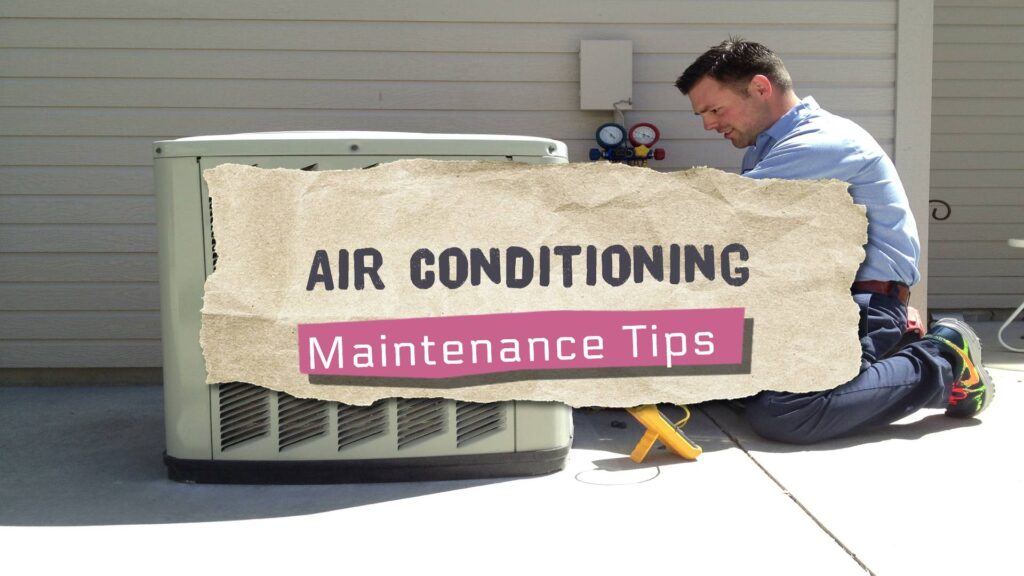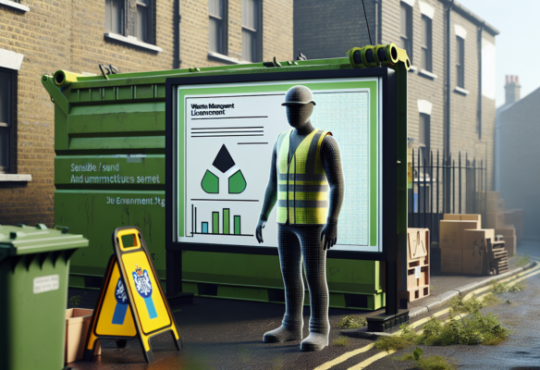
Air Conditioning Maintenance Tips From Expert Technicians
Helpful Air Conditioning Tips For Maintaining Your AC Unit
Spring is here, and it’s time to get your air conditioning system ready to handle the hard work of summer. When it gets hot, your ac unit is a blessing for sure. No one is comfortable when they are sweltering in the heat. Central air is one thing most of us tend to take for granted until it stops working, and these Air Conditioning Maintenance Tips are sure to help.
An air conditioner’s coils, filters, and fins require consistent maintenance for the unit to work efficiently and effectively during its lifetime. Ignoring necessary maintenance ensures a steady decline in air conditioning performance while energy use steadily increases.
By keeping your airconditioning system maintained, you can not only extend the lifespan of the unit, but you’ll also save money on energy while also expanding its lifespan. This in turn will save on costly early replacement. Inadequate maintenance can spell the death of your airconditioning system over time. By allowing your ac filters and coils to get dirty, you can cause the system to not work at peak efficiency. Then the compressor or fans are likely to fail prematurely.
Air conditioners need a bit of love and attention to ensure that the ac unit operates at the highest efficiency. The best time for maintenance is just before you start using the system to cool down the house.
Set out below, we will look at some of the most common air conditioner maintenance tips to keep your home cool and comfy.
AC Maintenance Tip #1 – The Importance of Changing Your Filter
A new filter helps optimize airflow, which keeps the air conditioner running efficiently. This enables you to avoid potentially costly repairs later on. Your basic air filter needs to be changed every 30 days, while the thicker pleated filters typically have a longer lifespan. Noting replacement dates on your calendar will help remind you to change your filters on a regular schedule.
The filter in your HVAC system ought to be changed a minimum of four times a year. If you live in a dusty part of the country or have pets in the house, you may consider changing your filter more frequently. Always make sure that you replace the filter with a new filter that has the same airflow rating. Be mindful of air purifying filters or HEPA filters as they can drastically reduce the airflow in your ac system. Because of the reduced airflow, the indoor coil can freeze.
Locate the filter housing on the indoor furnace/air conditioner. Quite possibly, you might need a screwdriver to turn the latch and open the filter housing door. You then need to remove the old filter and insert the new filter. Be sure to match the airflow direction arrows on the filter with the arrows on the unit. Close and latch the door.
AC Maintenance Tip #2 – Clean your condenser
Important: Shut Off Power First!
Because there is high risk of working around electrical power. And the fact that the air-conditioner’s parts move and can be dangerous, it’s essential to turn off power to the system entirely. On the exterior condenser/compressor, search for an outside shut-off box near the device or turn the power off at the breaker box.
Another essential maintenance step is to keep your condenser cleaned. A thorough spray with the garden hose once a year or more often if needed will help dislodge grass clippings, leaves, dirt, and other debris to improve airflow. Although these ac units are designed for outdoor installation and most can handle a spray from the hose, be sure to check your owner’s manual first or consult an HVAC professional. It is most vital to turn off the power at the circuit panel before cleaning. And leave it off for at least half an hour after you’re done. Rain doesn’t typically wet the fan motor inside the condenser, but the hose spray might. Don’t try to clean your condenser with a brush. The the fins are easily bent. Bending the fins impedes airflow and reduces efficiency.
Remove All Visible Debris From The AC Unit
Remove the fan cage on the outer condenser/compressor unit. Using a wrench or screwdriver, remove the fasteners and lift the enclosure or fan grille off the top of the ac unit. Clear out all accumulated leaves and other debris from the interior by hand or with a wet/dry vacuum.
On the exterior condenser/compressor, open and remove the fan cage from the unit. Also, while using a screwdriver or wrench, remove the fasteners as well and lift the fan grill or cage away from the top part of the ac unit. This action can be done by hand or with a wet/dry vacuum cleaner. This will remove all leaves and various other caked-on debris from the interior.
Clean And Straighten Bent Fins
Take off the outer covers and use the brush attachment on a shop vac to eliminate all caked dirt. Then, spray a gentle stream of water from your garden hose; spray the water through the fins from the inside out to eliminate any built-up dirt or debris in between the fins. Never use a pressure washer because extreme pressure can harm the fins. If the fins are filthy, utilize a commercially available fin cleaning spray (offered by your local home-improvement store; (read and follow the manufacturer’s guidelines.
Aligning The Fins
Bent fins can significantly decrease the efficiency of your ac unit. Considering that any decrease in airflow via the fins can reduce efficiency, it is crucial to carefully straighten bent fins using a butter knife or a readily available fin-straightening device. Be very gentle so that the tubing embedded within the fins is not damaged.
AC Maintenance Tip #3 – Keep Area Around Air Conditioner Condenser Clean
Keep the surrounding area around the condenser clear of weeds and keep lawn furniture and other items at least a few feet away. This will promote good circulation around the unit and allow easy access for service personnel.
Many people plant shrubs around their condenser to hide it from view and help it blend into the landscaping. Growing plants around the condenser can be a great idea. However, if you decide to have shrubs around your condenser, keep them trimmed back so that you have at least a couple of feet of clearance around the unit on all sides. Your air conditioning unit has to breathe freely to operate at maximum efficiency. But properly positioned shrubbery serves more than a decorative function. It can also shade the condenser from the hot sun to protect the finish, improve efficiency and even help prolong the life of the unit. Evergreen shrubs are best for this purpose because they don’t lose their leaves in the winter.
Advanced Planning Is A Great Air Conditioning Tip
If you’re going to plant new shrubs, look into the future and keep the mature size in mind as you determine planning locations, and remember to leave enough space in the back of the unit for accessibility. Do you have pets that spend a lot of time in the yard around the condenser? If so, it is recommended by experts to install a protective fence around the unit. Protective fencing will help keep both your pet and your condenser safe. Choose a fencing material that won’t impede airflow. And be sure to include a gate and leave enough clearance around the unit for accessibility.
If you cover the condenser in the winter to help keep it clean, the best way to go is to only the top of the unit to allow for adequate airflow through the sides, thereby preventing moisture buildup, which can damage the unit. Be sure to remember to remove the cover before you turn on the air-conditioner in the spring. It’s also crucial to be sure your outdoor unit is indeed an air conditioning condenser and not a heat pump because you should never cover a heat pump.
Check The Level Of The AC Pad
If the condenser unit is out of level, it can cause the condenser to fail earlier than its natural life span.
Over time, the platform upon which the condenser unit sits can begin to lean as the soil settles beneath it.
Check the condenser for levelness and use rot-resistant shims to bring it back to the proper height. But, if you have a heat pump system, it’s okay if the pad slopes slightly away from the foundation of the house to allow for defrosting in the winter.
Clean A Plugged Evaporator Drain
Inside your home, warm, moist air from your residence’s inside is circulated through the evaporator coil. The cold coil takes in warmth from the air, cooling it before the air is flowing back into your home. The moisture buildup in the air condenses on the evaporator coil’s surface as liquid water, trickling right into a pan below. The water moves into a drainpipe tube that is generally routed right into a cellar floor drainpipe, utility sink, or outdoors from the pan.
With time, mold and algae can accumulate and also potentially clog up the drain hose. If the drain is either flowing slowly or not flowing at all, it will need to be unclogged. A clogged drain can either trigger damages by spilling out all over the floor or, if the unit is equipped with a drain float, cause the system to quit cooling to avoid flooding.
Locate Drain Line Exit
First things first! You will need to locate where the drain line leaves the evaporator coil enclosure. Under normal circumstances, the drain is usually a one-inch PVC pipe. Follow it to the end of the pipe, where it drains out. Most times, the line drains outside near the condenser unit. In other circumstances, it can drain into a floor drain in the basement or a utility sink or, in the case of a unit located in an attic, down an outside wall.
When you have found the drain line location, use a wet/dry vacuum to clear out the drain. Be sure to take out the paper filter from the wet/dry vacuum so as not to wreck the filter. Hold the tube of the wet/dry vacuum to the end of the drain line. You can utilize duct tape or hold a cloth around the gaps. Then turn on the vacuum cleaner for a couple of minutes, then turn it off. This process will remove the drain of any growing organic matter.
Maintenance Tips For Central Air Conditioning Systems
While these simple DIY steps will help keep your AC system in top running shape, keep in mind that there are upkeep things, some maintenance tasks that just a qualified HVAC technician will certainly have the ability to do. For example, a slow leak in the refrigerant line in your air conditioner system can result in costly compressor failure. However, your average homeowner does not have the equipment or necessary skills essential to inspect the refrigerant levels properly.
Clean Air Ducts Are Essential
Also, the importance of clean ac ducts and proper airflow cannot be overstated. These are essential to a well-functioning system, but most homeowners lack the necessary skills, tools, and equipment for the work. The bottom line takeaway? While some airconditioning recommendations are twice a year, a savvy homeowner can do simple tasks and maintenance. However, it’s still essential to have an a/c specialist technician inspect the system periodically. The recommendation by experts is twice a year: Spring and Fall.
A professional inspection also helps to catch and to resolve most minor problems before they have a chance to morph into a significant and expensive ordeal.
These ac maintenance tips will help you keep your air conditioner at peak operating condition!
These helpful air conditioning maintenance tips have been provided by Blake Heating and Cooling Griffin GA
The Article Air Conditioning Maintenance Tips From Expert Technicians was found on https://limitsofstrategy.com
The post Air Conditioning Maintenance Tips From Expert Technicians appeared first on https://alef3.com











